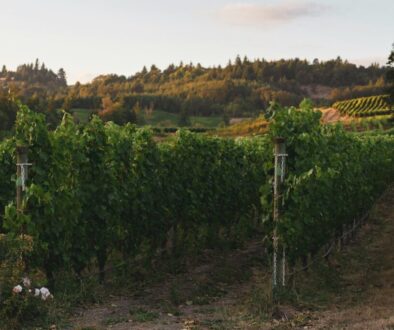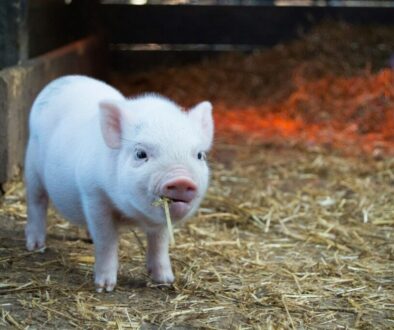Do sugar taxes, or voluntary schemes, hit a sweet spot?
Whether we realise it or not, sugar has become a huge part of our everyday lives. What used to be an occasional treat is now commonplace – leading cakes, biscuits and confectionary to become part of staple consumption. But consuming too much ‘added’ sugar is associated with diet related diseases – from tooth decay and type 2 diabetes, through to obesity and cardiovascular disease. The World Health Organization (WHO) has called on countries to tax sugar sweetened beverages (SSBs) to save lives. In the UK, the Government introduced a voluntary scheme calling on industry to reduce sugar in food and drinks consumed by children up to 18 years of age, and in April 2018 they introduced a Soft Drinks Industry Levy (SDIL). There have been calls to extend the Levy’s remit to other drinks and food. Ultimately, do voluntary schemes and/or sugar taxes work by boosting health? Jessica Sellick investigates. ………………………………………………………………………………………………..
What are sugars – and where do they come from? According to the British Nutrition Foundation (BNF), sugars are small carbohydrate molecules, found naturally in a variety of foods. Sugars extracted from these foods may be processed and used to develop a variety of different characteristics in terms of taste and functionality.
The sugarcane plant is native to New Guinea and was first cultivated around 8,000 B.C. The first chemically refined sugar was developed in India approximately 2,500 years ago through the extraction of sugar cane juice from the sugarcane plant. This technique then spread to China, Persia and the early Islamic worlds, reaching the Mediterranean in the 13th century and leading Cyprus and Sicily to become important centres for sugar production.
The first place to cultivate sugarcane for large-scale refinement and trade was Madeira (in the late 15th century), followed by Portugal who realised that best conditions for sugar plantations were in Brazil. Sugar at this time was an expensive commodity – known as white gold, its cultivation is regarded as pivotal in fuelling slavery. Indeed, Michael Tadman, an academic researcher, found a pattern of deaths exceeding births on sugar parishes in the United States – with slaves on sugar plantations much less able to resist diseases linked to dirt and poverty compared to other working-age slaves. In Jamaican cane fields, Tadman found the most overworked and abused slaves dropped dead after 7-years.
The Molasses Act in 1733 led the British to tax the import of sugar and related products into the North American colonies from non-British foreign colonies so as to support growers in the British West Indies to maintain their monopoly. In 1764 the Sugar Act was passed. This aimed to end the smuggling trade in sugar and molases from the French and Dutch West Indies so as to provide revenue to the British Empire.
From the 1740s to the 1820s sugar increased in popularity as eating habits changed and people consumed more jams, candy, tea, coffee, cocoa and processed foods. This led planters to look for ways of producing even more sugar – at this time driven by better irrigation, water-power and machinery.
In the early 19th century beet sugar, originally a German invention in 1747, became widely available. The United Kingdom Beetroot Sugar Association was established in 1832 as part of efforts to establish sugar beet in the UK. This was followed by The British Sugar Beet Society in 1915 and the passing of the Provisions of the British Sugar (Subsidy) Act 1925. By 1929 approximately 109,201 people were directly employed in the British sugar beet industry, with some 25,000 more casual labourers. In 1936 parliament nationalised the entire sugar beet crop processing industry through the creation of the British Sugar Corporation. Its name was shortened to British Sugar plc in 1982 before it was sold to Associated British Foods (ABF) in 1991. Since then, British Sugar has become the primary buyer of all the sugar beet grown in Britain.
Today, the most common sugars found in foods are monosaccharides (single sugars), including glucose, fructose and galactose; and disaccharides (two monosaccharides joined together) such as sucrose (table sugar), lactose (milk sugar) and maltose.
In 2015 the UK Scientific Advisory Committee on Nutrition (SACN) recommended that a definition of ‘free sugars’ be adopted in the UK, replacing the concept of ‘non-milk extrinsic sugars (NMES)’ which had been used over the previous 25-year period. SACN describes free sugars as ‘all monosaccharides and disaccharides added to foods by the manufacturer, cook or consumer, plus sugars naturally present in honey, syrups, and unsweetened fruit juices’. This description is very similar to the definition produced by the World Health Organization (WHO).
In turn, the NHS differentiates between sugars which are ‘found naturally’ in milk, fruit and vegetables; and ‘free sugars’, comprising any sugars added to food and drinks (e.g., sugars in biscuits, chocolate, flavoured yoghurt, breakfast cereals, fizzy drinks) and sugars in honey, syrups, nectars, fruit juices, vegetable juices and smoothies.
Throughout the Middle Ages, sugar was considered a rare and expensive spice; and doctors initially looked upon maple sugar as a medicinal virtue. Indeed the 16th century physician Jacobus Tabernaemontanus, described how ‘nice white sugar cleans your blood, strengthens body and mind, improves eyesight and helps wounds heal faster’. Yet the demographic history of sugar has been barbaric. Today, sugar has become an everyday (and for many of us a ‘must-have’) condiment – and the sugar dominating diets some people have are being increasingly linked to different types of ill-health.
How much sugar should we eat? According to the WHO, having a diet high in free sugars (more than 5-10% of your total energy intake) can be harmful and may lead to excess consumption of energy (calories) over time.
The UK Government recommends that free sugars should not make-up more than 5% of the energy (calories) that you get from food and drink each day. For different age groups this comprises:
- Adults having no more than 30g of free sugars a day, equivalent to 7 sugar cubes.
- Children aged 7-10 years having no more than 24g of free sugars a day (6 sugar cubes).
- Children aged 4-6 years having no more than 19g of free sugars a day, equivalent to 5 sugar cubes.
- Children under 4-years of age avoiding sugar-sweetened drinks and food with sugar added to it.
These figures exclude sugars naturally present in milk and dairy products, fresh fruits and vegetables, grains, nuts, and seeds. To provide an indication of how much free sugar can be found in some food and drinks:
- Strawberry milkshake, 14 cubes.
- Can of cola, 330ml, 9 cubes.
- Chocolate bar, 6 cubes.
- Fun-sized packet of sweets, 5 cubes.
- Ice-cream, 5 cubes.
- Cereal bar, 3 cubes.
- 1 juice pouch, 2 cubes.
The NHS has a sugar calculator for people to check how much sugar is in their favourite treats. It is worth noting that some organisations suggest not setting amounts, allowances, or limits; arguing instead that sugar should not be seen as a required nutrient in our diet.
Bodies such as the SACN and WHO recommend reducing consumption of free (or added) sugars based on evidence on the relationship between sugar intakes and health. For example, the NHS has found eating too much sugar can contribute to people having too many calories, which can lead to weight gain. The intake of added sugar has been linked to a higher risk for heart disease, type 2 diabetes, tooth decay, non-alcoholic fatty liver disease (NAFLD), and/or cognitive decline. While it is seen as prudent to consume added sugars in moderation, some physicians suggest that doing so without other reductions of other caloric sources is unlikely to achieve meaningful benefits.
How much sugar are we actually consuming? The National Diet and Nutrition Survey (NDNS) is a rolling programme that gathers quantitative information on the food consumption, nutrient intake and nutritional status of the general population aged 1.5 years and over living in the UK.
According to NDNS data, between 2016 and 2019, free sugars intake exceeded the Government recommendation of providing no more than 5% of total energy intake. Across all age groups, the mean intake ranged from 9.4% of total energy for adults aged 65 years and over, to 12.3% of total energy for children aged 11-18 years. Compared to previous NDNS data, the intake of free sugars had dropped by 3.8-4.9% percentage points since 2008 – with adults showing greater reductions than children.
In September 2021, Public Health England published a report which looked at the impact of COVID-19 pandemic on the diet and physical activity of people in the UK in 2020. Consumption of sugar sweetened soft drinks was lower in this study than in previous assessments for most but not all age groups (e.g. 25g per day lower for boys (but not girls) aged 11 to 18 years). The proportion of consumers of sugar confectionery and chocolate confectionery was also lower in this study; 32% and 36% of children aged 11 to 18 years moved from consumer to non-consumer of sugar and chocolate confectionery respectively while 9% and 14% moved from non-consumer to consumer. Consumption of buns, cakes and pastries was lower in this study in all age groups but there was little difference in consumption of biscuits and crisps and savoury snacks. In the web questionnaire, one-third of participants reported that they snacked more between main meals since the start of the pandemic although these snacks were not defined.
While data for the UK shows average intakes of free sugars in all age groups are above recommended levels, they also indicate that sugar consumption is falling. Some commentators suggest that this fall is not down to consumers buying less sugary foods and drinks, but down to manufacturers changing their formulas to include less sugar.
How has the Government intervened? Back in 2016, the Government set up a voluntary sugar reduction programme, setting a goal for all food industry sectors to voluntarily reduce sugar by 20% in products highly consumed by children under the age of 18 years by 2020. This included products such as breakfast cereals, yoghurts and fromage frais, sweet confectionary, biscuits, cakes, chocolate, ice-cream, lollies and sorbets, baked goods, puddings, sweet spreads and sauces. Unsweetened juice and sweetened milk-based drinks were added to the programme in 2018, with the aim of reducing sugar content by 5% in juice and 20% in milky drinks by 2021. Fermented yoghurt drinks were included from 2019, with a sugar reduction target of 20% by 2021.
The Office for Health Improvement and Disparities published an assessment of the programme in December 2022. This revealed a 3.5% reduction in the sales weighted average total sugar per 100g in products sold between the baseline year (2015) and Year 4 (2020). While not meeting the overall programme target of 20%, there were larger reductions for yoghurts and fromage frais (13.5%), breakfast cereals (14.9%) and ice-cream, lollies and sorbets (7.2%) over this time period. While these figures demonstrate how industry is reducing sugar levels, some organisations and commentators have described the pace of change under this voluntary scheme as too slow and uneven.
In April 2018 the Government introduced a 2-tier sugar tax on soft drinks known as the Soft Drinks Industry Levy (SDIL). The tax was targeted at manufacturers of soft drinks to encourage them to reduce the sugar content of their products. Companies have to pay one of two rates: (i) 24p per litre of drink if it contains 8 grams of sugar per 100 millilitres; or (ii) 18p per litre of drink if it contains between 5 and 8 grams of sugar per 100 millilitres.
Interestingly, Public Health England (PHE) reported a 28.8% reduction in total sugar content per 100ml between 2015 and 2018 in the drinks set to be included in the SDIL among retailer own brand and manufacturer branded products. Similarly, the Government estimated that over 50% of manufacturers reduced the sugar content of their drinks prior to the Levy’s introduction (equating to some 45 million kilograms of sugar).
Since it began, the SDIL had raised £898 million in revenue by the end of 2020-2021 fiscal year, and is forecast to be over £1 billion now. The Government initially used this revenue to establish the National School Breakfast Programme and double Primary schools Sports & PE Premium funding to £320 million per year, as well as for a one year Healthy Pupils Capital Fund, distributed locally to schools.
Modelling by the Universities of Oxford and Reading on the impact of health-related food taxation policies found a 20% tax on sugary drinks could reduce the prevalence of obesity in adults in the UK by 1.3%. In January 2023, the MRC Epidemiology Unit at the University of Cambridge published research looking at the impact of the SDIL on reception age children (those aged 4-5 years) and children in year 6 (aged 10-11 years). While researchers found no significant association between the Levy and obesity levels in Year 6 boys or younger children in reception classes; they found the Levy was associated with an 8% reduction in obesity levels in Year 6 girls (equivalent to some 5,234 cases of obesity in this cohort per year). Researchers believe as very young children consume fewer sugar-sweetened drinks the Levy would have had little or no effect on them compared to older children. Researchers also suggested the difference in obesity prevalence in the older boys and girls could be down to TV and product advertising.
Part One of the National Food Strategy was published in July 2020; and Part Two in July 2021. When the review began part one was intended to provide a broad analysis of the food system (from farm to fork), and part two a set of recommendations. In response to COVID-19 part one focused on the issues of hunger and ill health raised by the pandemic, as well as trade and food standards issues resulting from the end of the EU exit transition period. The recommendations in the report relating to public health called for the introduction of a Sugar and Salt Reformulation Tax – and proposed using some of the revenue to help fresh fruit and vegetables reach lower-income families.
In July 2020, months into the Covid-19 pandemic, the Government published its policy paper, Tackling obesity: empowering adults and children to live healthier lives. In it, the Government expressed concern about the “consistent evidence that people who are overweight or living with obesity who contract coronavirus (COVID-19) are more likely to be admitted to hospital, to an intensive care unit and, sadly to die from Covid-19 compared to those of a healthy body weight”. The paper acknowledged the success of the SDIL domestically, suggesting it could help other countries achieve similar gains. The Government also stated how it intends to continue to work with business and industry on reduction and reformulation programmes on sugar, calories and salt.
More recently, cost-of-living pressures have placed a significant strain on some households to pay for essential items. According to the Office for National Statistics (ONS) the prices of food and non-alcoholic drinks rose at the fastest rate in more than 45-years in the 12-months to March 2023. The annual inflation rate in this category was 19.2%, up from 18.2% in the year to February 2023. The largest contributor to the rise in food inflation was bread and cereals, where average prices rose by 19.4% in the year to March 2023. The Opinions and Lifestyle Survey (OPN) found 49% of adults were worried about the cost of food – with people living in the most deprived areas more frequently reporting being worried about the cost of food (64%). 48% of adults responding to the survey had bought less than usual when food shopping over the past two weeks. Research suggests that low-income households tend to purchase and consume foods that are less healthy than higher-income households. Studies have also shown that when faced with food insecurity, people gravitate towards cheap, energy-dense foods that can be bad for their health. While some of us may have decided to ditch the biscuits to save money on our shop, will we see others increasing their purchase of items with free sugars?
A ‘sweet’ beet countryside? The National Farmers Union (NFU) estimates there are nearly 3,000 sugar beet growers, farming approximately 100,000 hectares across East Anglia, the East Midlands and Yorkshire. The industry supports a further 9,500 jobs in the wider UK economy and works with 7,000 different businesses. Growers deliver sugar beet to four British Sugar factories located in Cantley (Norfolk Broads), Bury St Edmunds (Suffolk), Wissington (Norfolk Fen) and Newark (Nottinghamshire). On average, sugar beet travels 28 miles from field to factory. 99% of the crop is used for by-products (i.e., for animal feed and topsoil). Approximately 8 Kha is grown to produce bioethanol (a biofuel).
In Scotland, the first successful crop in half a century was harvested in early 2021. ‘The sugar beet initiative’ involves the Industrial Biotechnology Innovation Centre (IBioIC), SAC Consulting (part of SRUC), and Scottish Agricultural Organisation Society (SAOS). While small amounts of sugar beet are already grown in Scotland, this initiative aims to bring back the crop on a larger, commercial scale, using high-yielding varieties – with potential uses including the production of bioethanol as a substitute for petroleum-based chemicals. Funding from Scottish Enterprise is being used to monitor the environmental, societal, and economic impact of the initiative.
Sugar beet is very much part of our rural landscapes and economies. In an agricultural context, sugar beet is viewed as a rotation crop that can prevent the build-up of pests, weeds and diseases, improve soil health and support action on climate change. However, for some commentators, sugar is bad for us and for land, and we need to grow less of it. This opens up a much wider discussion around how sugar is used (its processing and products).
It is worth noting that there are likely to be a number of adults and children in our rural communities that are overweight or obese. Indeed, some studies have found higher rates of BMI rates and obesity rates amongst rural residents. We also know that targeting support to residents in dispersed and sparsely populated areas can be more difficult, and that rural residents can find it more difficult to access services compared to their urban counterparts. We need, therefore, to ensure that rurality is not a barrier to being a healthy weight.
Where next? With the expiration of the 20% by 2020 set within the voluntary sugar reduction programme, Action on Sugar is calling for a comprehensive and mandated programme that builds on the salt reduction programme which is seen by policy-makers, industry bodies and citizens to be a success. But it is also worth remembering that it is not all down to policy-makers or industry, what more can we do individually, and in our communities, to break the sugar addiction and lead healthier lives?
…………………………………………………………………………………………………
Jessica is a researcher/project manager at Rose Regeneration and a senior research fellow at The National Centre for Rural Health and Care (NCRHC). Jessica also sits on the board of a Housing Association that supports older people and a charity supporting Cambridgeshire’s rural communities.
She can be contacted by email jessica.sellick@roseregeneration.co.uk.
Website: http://roseregeneration.co.uk/https://www.ncrhc.org/
Blog: http://ruralwords.co.uk/
Twitter: @RoseRegen



